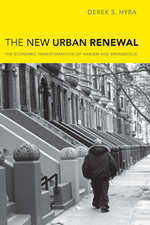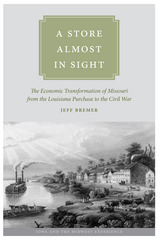2 books about Economic Transformation

The New Urban Renewal
The Economic Transformation of Harlem and Bronzeville
Derek S. Hyra
University of Chicago Press, 2008
Two of the most celebrated black neighborhoods in the United States—Harlem in New York City and Bronzeville in Chicago—were once plagued by crime, drugs, and abject poverty. But now both have transformed into increasingly trendy and desirable neighborhoods with old buildings being rehabbed, new luxury condos being built, and banks opening branches in areas that were once redlined. In The New Urban Renewal, Derek S. Hyra offers an illuminating exploration of the complicated web of factors—local, national, and global—driving the remarkable revitalization of these two iconic black communities.
How did these formerly notorious ghettos become dotted with expensive restaurants, health spas, and chic boutiques? And, given that urban renewal in the past often meant displacing African Americans, how have both neighborhoods remained black enclaves? Hyra combines his personal experiences as a resident of both communities with deft historical analysis to investigate who has won and who has lost in the new urban renewal. He discovers that today’s redevelopment affects African Americans differentially: the middle class benefits while lower-income residents are priced out. Federal policies affecting this process also come under scrutiny, and Hyra breaks new ground with his penetrating investigation into the ways that economic globalization interacts with local political forces to massively reshape metropolitan areas.
As public housing is torn down and money floods back into cities across the United States, countless neighborhoods are being monumentally altered. The New Urban Renewal is a compelling study of the shifting dynamics of class and race at work in the contemporary urban landscape.
[more]

A Store Almost in Sight
The Economic Transformation of Missouri from the Lousiana Purchase to the Civil War
Jeff Bremer
University of Iowa Press, 2014
A Store Almost in Sight tells the story of commercial development in central Missouri from the early days of American settlement following the Louisiana Purchase to the Civil War. Focusing on those counties near or on the Missouri River, historian Jeff Bremer confirms that the history of the frontier is also the history of the spread of capitalist values. The letters, journals, diaries, and travel accounts of Missouri settlers and visitors reveal how small decisions made by Missouri’s rural white settlers—ranging from how much of a certain crop to plant to how many eggs to take to the local store—contributed to the establishment of a market economy in the state.
Most Missourians welcomed the opportunity to take part in commercial markets. Farmwomen sold eggs or butter to peddlers and in nearby towns, while men took surplus corn or pork to stores for credit. Immigrants searched for the most fertile land closest to waterways, to ensure they would have large harvests and an easy way to ship them to market. Families floated farm goods downriver until steamboats transformed rural life by drastically reducing the cost of transportation and boosting farm production and consumption. Traders also trekked west across the plains to trade at the inland entrepôt of Santa Fe. The waves of migrants headed for Oregon and California in the 1840s and 1850s further encouraged commercial development. However, most white settlers lacked the necessary financial means to be capitalists in a technical sense, seeking instead a “competency,” or comfortable independence.
This fresh reinterpretation of the American frontier will interest anyone who wants to understand the economic and social significance of westward migration in U.S. history. It gives the reader a gritty, grassroots sense of how ordinary people made their livings and built communities in the lands newly opened to American settlement.
Most Missourians welcomed the opportunity to take part in commercial markets. Farmwomen sold eggs or butter to peddlers and in nearby towns, while men took surplus corn or pork to stores for credit. Immigrants searched for the most fertile land closest to waterways, to ensure they would have large harvests and an easy way to ship them to market. Families floated farm goods downriver until steamboats transformed rural life by drastically reducing the cost of transportation and boosting farm production and consumption. Traders also trekked west across the plains to trade at the inland entrepôt of Santa Fe. The waves of migrants headed for Oregon and California in the 1840s and 1850s further encouraged commercial development. However, most white settlers lacked the necessary financial means to be capitalists in a technical sense, seeking instead a “competency,” or comfortable independence.
This fresh reinterpretation of the American frontier will interest anyone who wants to understand the economic and social significance of westward migration in U.S. history. It gives the reader a gritty, grassroots sense of how ordinary people made their livings and built communities in the lands newly opened to American settlement.
[more]
READERS
Browse our collection.
PUBLISHERS
See BiblioVault's publisher services.
STUDENT SERVICES
Files for college accessibility offices.
UChicago Accessibility Resources
home | accessibility | search | about | contact us
BiblioVault ® 2001 - 2024
The University of Chicago Press









